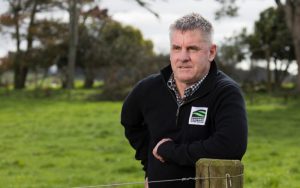
All dairy farmers know how hard it is to find and retain trusted farm managers who work unsupervised and are fully invested in animal welfare, productivity, infrastructure and the environment.
Northland dry farm manager Chris Boxall is such an employee, and his friend and employer, Tom Pow, wanted to push him into the spotlight.
Pow has battled illness for the past two years and he and wife Kathy have relied more heavily on family members and three farm managers and their employees, all in the Mana district south of Whangārei.
Boxall answered the phone one Friday morning recently to be asked if he was on the farm.
“No, but I can be in 10 minutes.”
A short drive from his home up SH1 to the machinery barn and workshop, and Pow introduced this rural journalist and suggested Boxall tell his story.
“This industry has many excellent farm managers who come from all sorts of backgrounds and find their happy places and due rewards,” Pow says.
“Quite frankly, we couldn’t do without Chris and his fellow staff members.”
The Boxall dry farm of 100ha is stocked with six service bulls and 400 dairy grazers, mixed Friesian-Jersey, from 100kg weaners through to 450kg pregnant heifers.
They are all calm and contented, well fed, healthy, regularly weighed, vet checked and delivered to the milking platforms in top condition ready to calve.
“Chris takes such good care of all cattle on this farm – they are so quiet when they come into the milking herds for the first time.”
Now aged 67, Boxall got into dairying in his mid-20s after training as a mechanic.
He became a herd manager and then sharemilker for 22 years at Ruawai on one of the Pow properties.
Chris and Sue Boxall sold their cattle and bought a new house at One Tree Point near the Pows’ Ruakākā home farm.
When the Pows bought a lovely flat to gentle rolling farm seven years ago midway between their two dairy farms, all lined up along SH 1, Boxall was asked to move over from Ruawai.
The infrastructure on the dry farm is quite out of the ordinary — disused herringbone dairy, wooden gates, tree-lined fences, races and waterways, covered yards and weigh scales, American-style barns with individual cattle stalls and, since 2019, a 240-cow Herd Home.
The presence of a Herd Home will not be surprising to those who know that Tom Pow invented the barn management system and has sold more than 450 installations here and overseas.
In persistent rain Boxall brings in the heaviest of his grazing cattle to get them off the paddocks, minimize damage to soil structure and feed them silage in the Herd Home.

During the summer the dried effluent in the bunkers underneath the concrete grate flooring of the Herd Home is scooped out with a front-end loader and spread on paddocks before sowing down maize.
Supplementary feeding in the winter months consists of more than 100t of dry matter in maize silage pits and 400 large square bales of hay cut off the farm.
Shifting cattle between paddocks and to and from the Herd Home takes much of Chris Boxall’s time.
No dogs or sticks are used and all cattle movements along the races and through gates are slow and easy.
He also works farm machinery, mainly quad bikes and tractors, and fills in with an endless maintenance list of fences, gates, drains and tree lines, mainly poplars.
Paddock preparation for cropping and the subsequent regrassing is done with Pow machinery while contractors do the sowing and harvesting of 6ha of maize annually.
“I find a great variety of jobs to do on the farm and prefer to work on my own,” Boxall says.
Livestock, feed and materials are moved between the Pow properties in trucks, tractors and trailers along the state highway, always decked with flags and hi-vis gear and keeping to the verges where possible.
“Chris is always reliable and multi-skilled for fixing things and building things and he treats this farm like it is his own,” Pow says.
He works some hours of all seven days a week, but also has time for fishing in Whangārei harbour.
“I had my time as a cow and land owner and I am much happier working as a farm manager,” Pow says. “Long may it continue.”

























